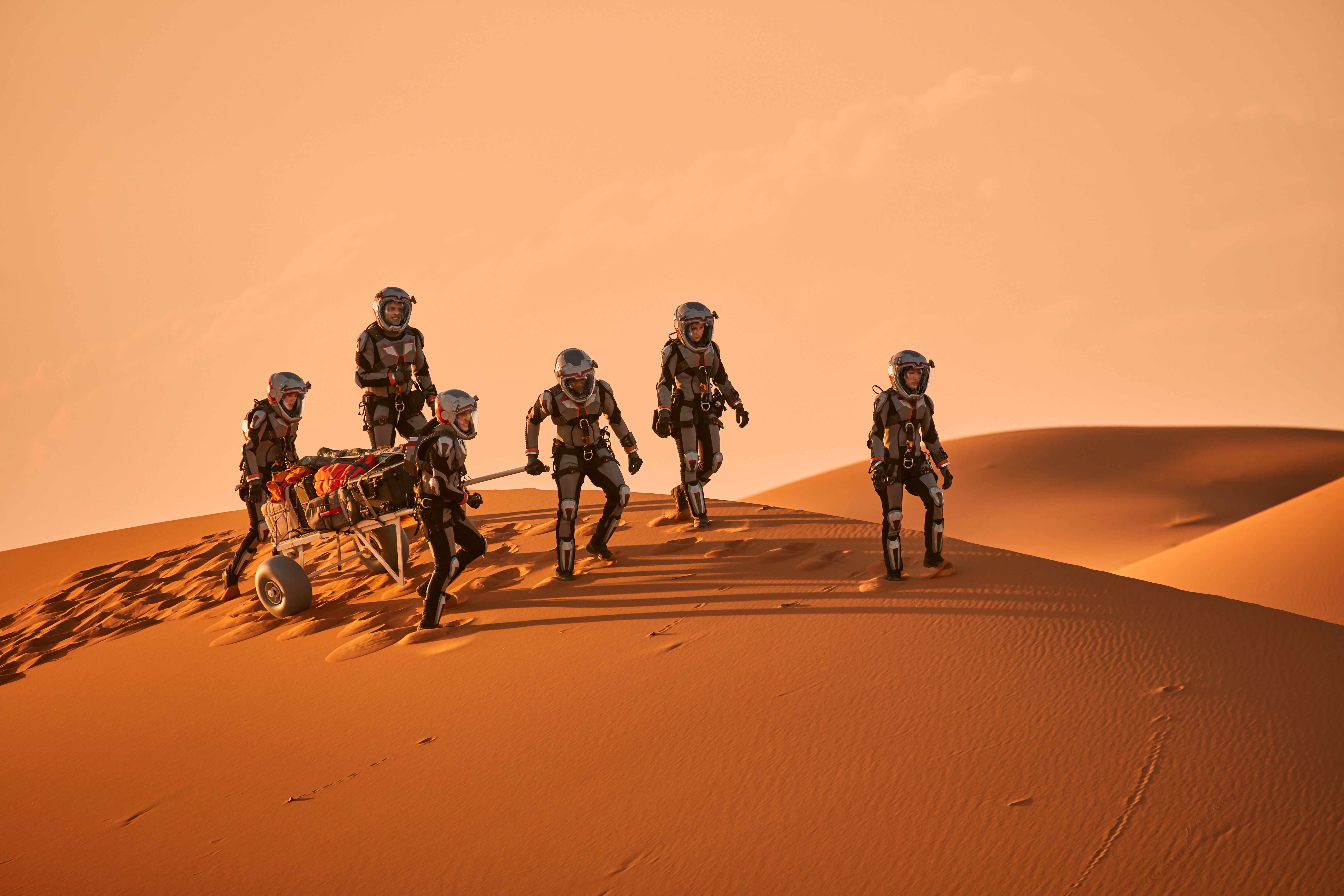Life on Mars: Pasta sauce, dessert and mining
Space travel suddenly seems like the thing today. Private space companies, including Space X, give us a glimpse at the rockets meant to take us deeper into our solar system. So, a show, National Geographic's Mars, is also offering a window into how humans will colonize the red planet, tackling issues from what we'll eat to how we'll pay for it all.
With Ron Howard and Brian Grazer as executive producers, the story follows a familiar narrative arc of hopeful discovery, drama, and, most keenly, wonderment. Mars, though, is not just about traveling further into our galaxy but about how to bend the idea of storytelling.
"There's no such thing as innovation without experimentation," said Howard during a lunch for the second season of Mars in New York City, who added that the show was "…intent on taking people on the adventure."
Mars, whose second season drops today, November 12, is a hybrid of fact and fiction with a scripted series that's interwoven with documentary footage about the Earth's current space program told by Elon Musk, Neil deGrasse Tyson, and other experts.
Of course, isolation and survival are part of this story, as is how we'll raise the money to pay for this scientific mission. Courteney Monroe, CEO of National Geographic Global Networks, said that's one reason the second season touches both exploration and exploitation. Mars is now being mined in the show, a way to bring commercial funding to the colony.
Growing pains
Another narrative thread, which started in Season 1, concerns how humans will get enough nutrients to survive on a planet where plants cannot be grown in the soil.
Viewers familiar with the film The Martian will recall astronaut Mark Watney was forced to grow and eat a lot of potatoes after he was marooned on Mars. Experts believe that what we'll eat on Mars will be quite a bit more varied. Still, the food that goes up with the first Mars astronauts needs to be different from any sent with astronauts in the past.
To start, any grub sent to Mars must last at least the 34 months astronauts are expected to spend getting to Mars, being on the planet, and returning to Earth. Food also has to be nutritious and acceptable in flavor and variety.
Michele Perchonok, a former NASA food scientist who spent 17 years working at the NASA Johnson Space Center, said that meals going up to the International Space Station, for example, have an 18-month shelf life, while food heading to Mars will need a five-year shelf life. And a crew of six people must bring 24,000 pounds of food. "It costs a lot to launch that food into space," she said.
So there will be pressure to grow food, which Perchonok said could range from bell peppers to onions, strawberries to carrots, and yes, potatoes. Scientists will likely use hydroponics, which replaces soil with a nutrient solution and water, and also likely add wheat, soybean and peanuts to their crops. That would yield tofu, oil and flour for dishes like pasta and sauce, and even cookies or cakes.
Because, said Perchonok, no one is going to be happy about forgoing dessert for five years. That freeze-dried ice cream we remember from the Moon missions? It will probably not cut it for tomorrow's astronauts, even after experiencing the wonder of being the first humans to colonize Mars.
